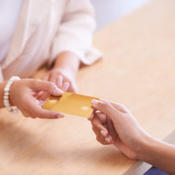 As a therapist who specializes in treating complex posttraumatic stress, I am often asked whether my practice is “depressing,” or whether it brings me down. It’s an obvious question: Along with the victories and the moments of fulfilling interpersonal connection, I am in vicarious contact with intensely difficult situations and stories. Also, practicing somatic psychotherapy develops one’s sense of empathy: the ability to sense what another person is feeling and to also feel it. So I often literally feel, in my own body, the sensations and emotions of the distress experienced by the people I work with in therapy. This is a good thing, as it is a fairly reliable indicator of what a person in therapy may be experiencing. Fortunately, my training affords me the capacity to feel others’ distress without getting stuck in it.
As a therapist who specializes in treating complex posttraumatic stress, I am often asked whether my practice is “depressing,” or whether it brings me down. It’s an obvious question: Along with the victories and the moments of fulfilling interpersonal connection, I am in vicarious contact with intensely difficult situations and stories. Also, practicing somatic psychotherapy develops one’s sense of empathy: the ability to sense what another person is feeling and to also feel it. So I often literally feel, in my own body, the sensations and emotions of the distress experienced by the people I work with in therapy. This is a good thing, as it is a fairly reliable indicator of what a person in therapy may be experiencing. Fortunately, my training affords me the capacity to feel others’ distress without getting stuck in it.
But no, my practice does not bring me down. I am deeply grateful for my training and my entry into this field. I can’t imagine doing anything else, because I believe increasing humans’ capacity for self-regulation is the most important thing in the world.
That’s a big statement. I don’t make it lightly.
You might be wondering: why self-regulation, of all things? After all, most people don’t even think about self-regulation or how it relates to our individual or collective lives. The topic doesn’t even cross most people’s minds.
As I noted in a previous article, “The term self-regulation means ‘control [of oneself] by oneself.’ It refers to a system taking the needed steps to keep itself in balance.” Specifically, somatic therapy helps people learn to self-regulate the balance of the fight/flight response in their nervous system. This balance can (and should) change moment by moment, depending on the current situation and environmental demands upon the person. In other words, it’s a dynamic balance—and it has to be accurate or there will be problems!
According to Stephen Porges, we have four basic states (like “gears”) in our autonomic nervous systems. Our thoughts and behaviors at any moment are hugely influenced by the relative proportions of each. These are physiological states in the autonomic nervous system. They are:
- Social engagement. This state is controlled by the ventral vagal (10th cranial) nerve. In social engagement, a person remains calm. They are truly available to be present with others. They can experience empathy. They are able to hold good boundaries, cooperate with others, and maintain a sense of humor. The key concepts here are calm, flexibility, and empathy. This state is vitally important; it forms the foundation of good self-regulation and, generally speaking, should be the most predominant “gear” in daily life. However, it’s often overlooked, as the public doesn’t tend to have much education about it.
- Fight. Usually experienced as anger, irritability, or rage, this state is controlled by the sympathetic nervous system (SNS). It comes online when the person’s midbrain structures perceive a threat. The more predominantly the person is in a fight response, the more the prefrontal cortex goes offline and the less the person is able to experience calm or empathy.
- Flight is usually experienced as fear, anxiety, or restlessness. Also controlled by the SNS, the flight state includes the same loss of cortical function as with fight.
- And then there is freeze, which is usually experienced as passivity, low energy, amotivation, dullness, foggy-headedness, and reduced capacity for cognition and emotion (other than fear). This state is also mediated by the vagus nerve—but an older, more primitive portion of it, the dorsal vagal system. Basically, freeze is a death preparation state, and it shows up when the body “thinks” social engagement, fight, and flight would be ineffective.
As Peter Levine writes, previous traumatically stressful events that have not been fully resolved in the nervous system will disrupt a person’s self-regulation, biasing their response to present-day events. Specifically, unresolved trauma causes the person to respond with excessive fight, flight, and/or freeze response relative to the current situation.
Self-regulation supports cooperation and healthy group norms. I wish we could wipe out 25% of our fast-food restaurants and liquor stores, replacing each of them with a free somatic therapy clinic.
Here is a thought exercise to illustrate the vital importance of self-regulation and how it impacts just about every situation across our human lives—on small and large scales. Imagine each of the following common scenarios. Then, imagine how each scenario could be different if at least one person involved was able to maintain calm social engagement.
- Bobby is growing up in an impoverished neighborhood. One of his parents is absent and the other is stressed, working two low-wage jobs in order to pay the rent. In his family and in his immediate community, there is no one consistently available who creates a sense of calm and safety. Bobby’s nervous system never learns how to drop out of threat response and into relaxed social engagement. As he grows up, this lack of internal safety and stability has an impact on every interaction and decision he makes.
- On the freeway, one driver doesn’t see another in time and nearly causes a collision—not at all on purpose. The other driver is angry and begins to escalate. The at-fault driver becomes upset by this.
- Two next-door neighbors don’t get along well. One decides to start barbecuing his dinner. The other is allergic to smoke; she yells at him to stop, or else she’s going to get her cousin to beat him up. The first neighbor pulls out a knife and waves it at her.
- A country is faced with a major decision: whether to stop manufacturing a product that has a large negative impact on the environment (including animals and people). Some lobbyists profit majorly from the manufacture and sale of this product. They are competing for economic rankings for their shareholders, so they are focused on increasing financial profit and do not show empathy to those severely affected.
- Two cultures (or one culture and one subculture) have hated each other for generations. The insults and the fighting have gone on for so long that no one remembers the original transgressions. The topic is charged with emotion and exaggeration. Children in each culture are raised to hate (or at least dislike and avoid) the other culture. Eight-year-old Amanda secretly feels curious about the other people and would like to get to know some of them. She doesn’t talk with anyone else about this, because doing so could get her labeled a traitor and ejected from the very family and community she needs in order to survive and grow up. This collectively stuck survival charge isn’t usually in the foreground, but it permeates the background of her daily life.
Each of the above scenarios illustrates the ripple effect of dysregulation and how it lies at the core of most human problems. There are many, many other examples. Imagined the other way—that is, with the influence of a self-regulated person or people—these scenarios can also illustrate the powerful positive impact of self-regulation: it has a strong tendency to stop conflict and exploitation (due to the presence of empathy). Self-regulation supports cooperation and healthy group norms. I wish we could wipe out 25% of our fast-food restaurants and liquor stores, replacing each of them with a free somatic therapy clinic.
And the thing is, we could—if only there were enough aware, self-regulated people to make it happen.
Until then, I’ll hold off on my occasional daydreams of being a barista, or a nature guide in a sustainability program. Instead, my colleagues and I continue to support self-regulation, one nervous system at a time.
References:
- Porges, S. W. (2001). The polyvagal theory: Phylogenetic substrates of a social nervous system. International Journal of Psychophysiology, 42:123–146.
- Porges, S. W. (2003). Social engagement and attachment: A phylogenetic perspective. Roots of Mental Illness in Children, Annals of the New York Academy of Sciences 1008:31–47.

The preceding article was solely written by the author named above. Any views and opinions expressed are not necessarily shared by GoodTherapy.org. Questions or concerns about the preceding article can be directed to the author or posted as a comment below.

 Addiction as a Self-Regulation Strategy: Payoff Now, Pay Up Later
Addiction as a Self-Regulation Strategy: Payoff Now, Pay Up Later The Charge of the Somatic Psychotherapist: Rewiring a Living System
The Charge of the Somatic Psychotherapist: Rewiring a Living System The Biology of Calm: How Downregulation Promotes Well-Being
The Biology of Calm: How Downregulation Promotes Well-Being

